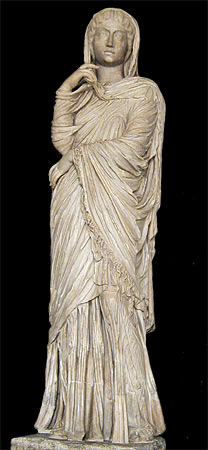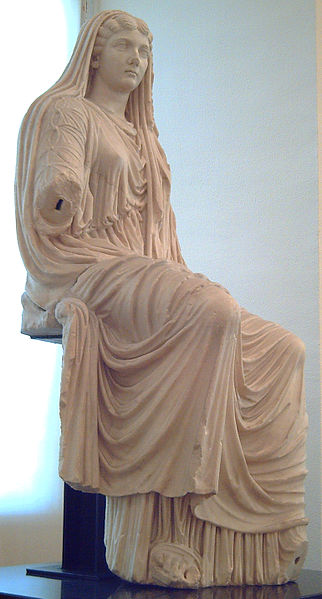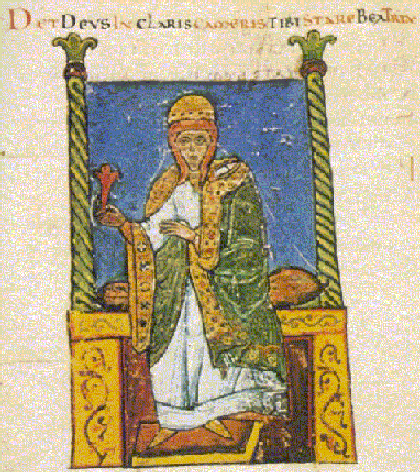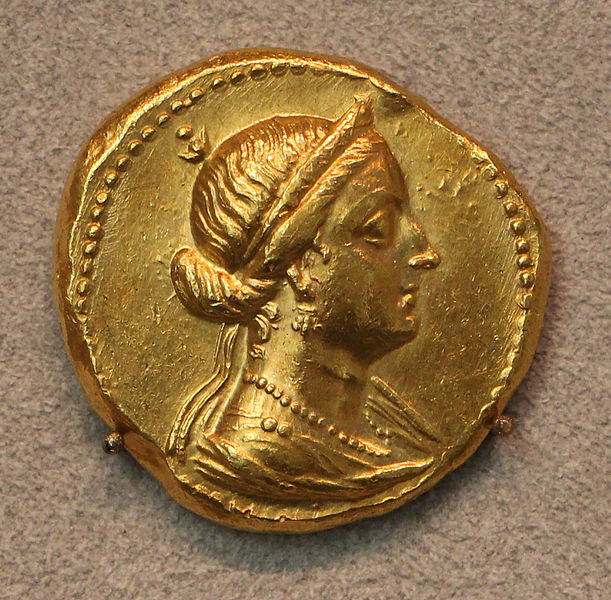Women and girls of all ages generally wore several layers of clothing. An undertunic formed the lowest layer. It generally only fell to the knee and was usually solid in color. A band of cloth could be wrapped around the upper chest over or under this tunic to support the breasts. A second, floor-length outer tunic went over everything. If she stayed inside, this was all a respectable woman needed. Out of doors and in cooler weather she added a palla, a large, usually woolen, rectangular shawl. This was generally draped over the left shoulder from behind, wrapped around the back of the body, drawn over or under the right arm, and then thrown over the left shoulder or arm. It could be pulled up to cover the head or not. An additional scarf or shawl could also go over the head.
[Livia Drusilla, 1st century CE, National Archaeological Museum of Spain, source: Wikimedia Commons]
Generally speaking, women’s clothing wasn’t particularly ornamental. It was all generally the same shape and usually solid in color. When a woman wanted to show off her appearance, she turned to jewelry and elaborate hairstyles instead. While the Roman women’s clothing stayed generally the same over time, hairstyles changed drastically, from the poofy orbis comarum of the Flavian period to simpler-looking* buns or looped braids.
*Though not necessarily actually simpler.
Pomeroy, Sarah B. Goddesses, Whores, Wives, and Slaves. New York: Schocken, 1995.
Roman Clothing: Women - VRoma.org
Clothing of Women and Girls - Classics Unveiled
Roman Clothing for Women -Tribunes and Triumphs






 RSS Feed
RSS Feed
